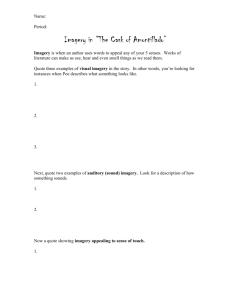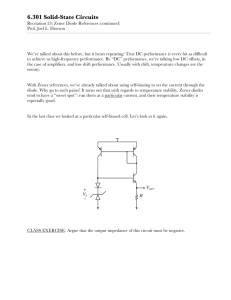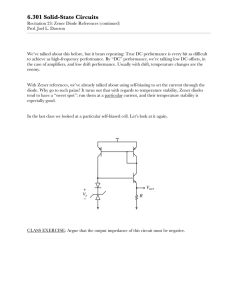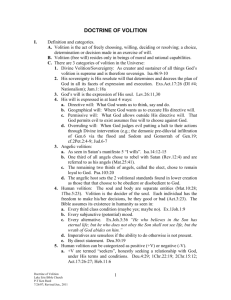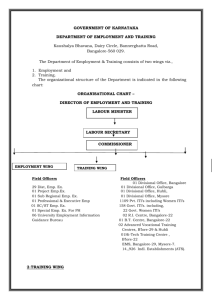grant bial 51/06
advertisement
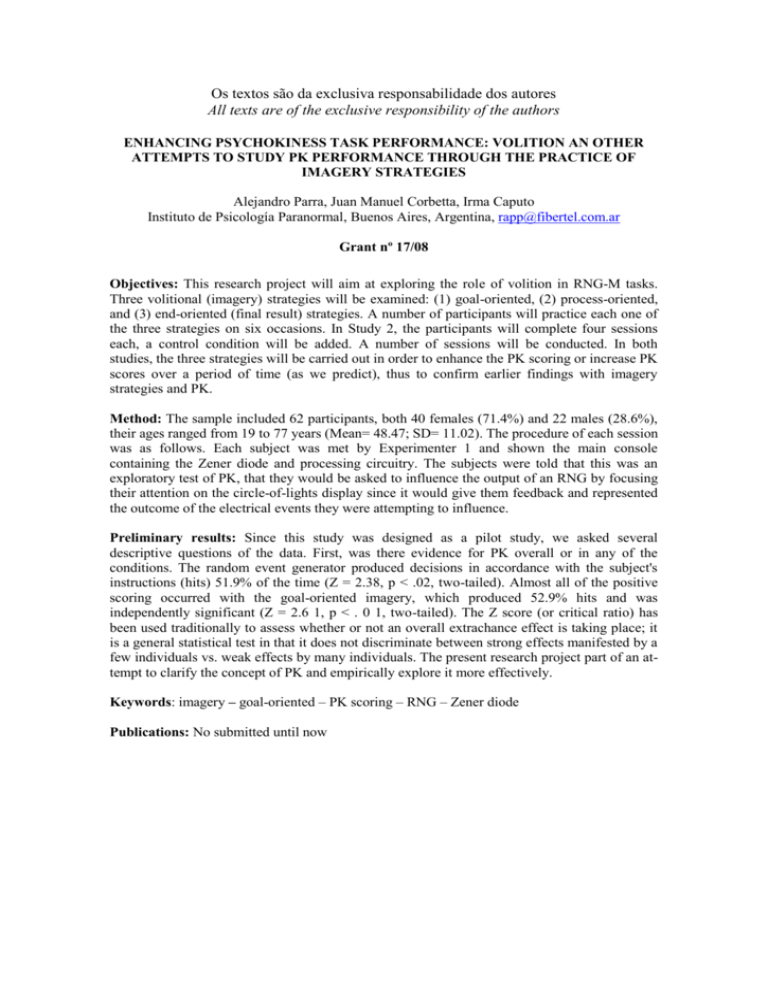
Os textos são da exclusiva responsabilidade dos autores All texts are of the exclusive responsibility of the authors ENHANCING PSYCHOKINESS TASK PERFORMANCE: VOLITION AN OTHER ATTEMPTS TO STUDY PK PERFORMANCE THROUGH THE PRACTICE OF IMAGERY STRATEGIES Alejandro Parra, Juan Manuel Corbetta, Irma Caputo Instituto de Psicología Paranormal, Buenos Aires, Argentina, rapp@fibertel.com.ar Grant nº 17/08 Objectives: This research project will aim at exploring the role of volition in RNG-M tasks. Three volitional (imagery) strategies will be examined: (1) goal-oriented, (2) process-oriented, and (3) end-oriented (final result) strategies. A number of participants will practice each one of the three strategies on six occasions. In Study 2, the participants will complete four sessions each, a control condition will be added. A number of sessions will be conducted. In both studies, the three strategies will be carried out in order to enhance the PK scoring or increase PK scores over a period of time (as we predict), thus to confirm earlier findings with imagery strategies and PK. Method: The sample included 62 participants, both 40 females (71.4%) and 22 males (28.6%), their ages ranged from 19 to 77 years (Mean= 48.47; SD= 11.02). The procedure of each session was as follows. Each subject was met by Experimenter 1 and shown the main console containing the Zener diode and processing circuitry. The subjects were told that this was an exploratory test of PK, that they would be asked to influence the output of an RNG by focusing their attention on the circle-of-lights display since it would give them feedback and represented the outcome of the electrical events they were attempting to influence. Preliminary results: Since this study was designed as a pilot study, we asked several descriptive questions of the data. First, was there evidence for PK overall or in any of the conditions. The random event generator produced decisions in accordance with the subject's instructions (hits) 51.9% of the time (Z = 2.38, p < .02, two-tailed). Almost all of the positive scoring occurred with the goal-oriented imagery, which produced 52.9% hits and was independently significant (Z = 2.6 1, p < . 0 1, two-tailed). The Z score (or critical ratio) has been used traditionally to assess whether or not an overall extrachance effect is taking place; it is a general statistical test in that it does not discriminate between strong effects manifested by a few individuals vs. weak effects by many individuals. The present research project part of an attempt to clarify the concept of PK and empirically explore it more effectively. Keywords: imagery – goal-oriented – PK scoring – RNG – Zener diode Publications: No submitted until now



